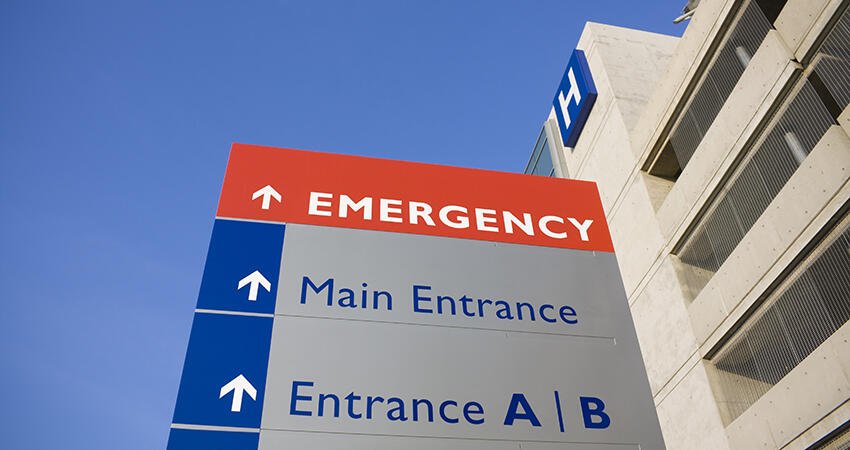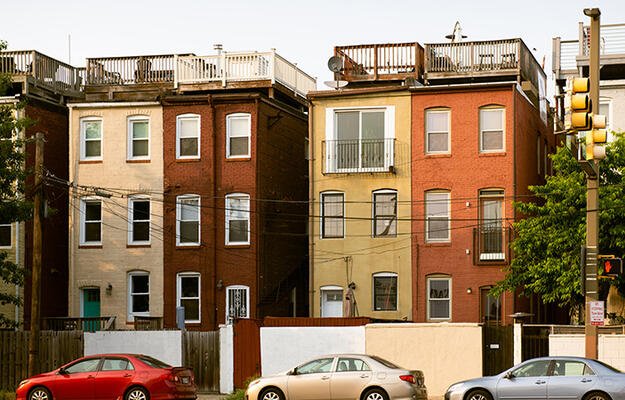
Housing-Focused Interventions at the Top of Health Systems’ Community Investments
- Title:
- Housing-Focused Interventions at the Top of Health Systems’ Community Investments
- Author:
-
Leora I. Horwitz, Carol Chang, Harmony N. Arcilla, and James R. Knickman
- Source:
- Publication Date:
-
2020
Hospitals and health systems spent $1.6 billion on housing from 2017-2019.
A hospital’s mission is to improve the health and well-being of its patients and communities it serves. Traditionally, hospitals accomplish this goal by providing health care services, but an increasing recognition of how social determinants—factors such as housing, neighborhoods, environmental conditions, education, and the built environment—affect health has inspired many hospitals and health systems to rethink how they achieve this mission. To better understand how hospitals and health systems are reorienting their investments, a new study identifies the latest trends in their spending on social determinants of health.
First, the researchers searched LexisNexis and Google for news articles and press releases that included three elements: “health systems” or “hospital”; “investment”; and “social determinant of health” or “community health.” They limited the search to the almost three-year period from January 1, 2017 to November 30, 2019. For each search result, they recorded the type of funding commitment, such as direct grants or loans. They excluded programs that provided direct medical care, subsidized unfunded care, renovated hospitals, and created or implemented social determinants screening or referral tools.
Next, the researchers categorized investments by the five social determinants of health domains defined by the US Department of Health and Human Service’s Healthy People 2020 objectives (economic stability, education, social and community context, health and health care, and neighborhood and built environment). They also added a sixth category exclusively related to housing. In addition to grouping investments by domain, the researchers also noted the total dollars committed to an investment (overall and by year) and the characteristics of the health system making the investment. Health system characteristics included location, ownership type, acute care beds, status as an accountable care organization, participation in a specific Medicare innovation, and whether the health system was in a Medicaid expansion state.
One important study limitation is that not all news sources listed the dollar amount of an investment commitment. Some also lumped in a health system’s investment with a collaborative investment, so the researchers believe their estimates are likely low. The researchers also note their research mostly identified commitments and not actual investments, so it’s possible that some commitments may not be realized.
Key findings
- Among the six domains, housing had the largest commitment at $1.6 billion allocated across 52 programs.
- Housing investment programs included affordable housing construction (often with a specific percentage of units set aside for homeless patients or high utilizers of hospital services), eviction prevention and housing stabilization programs, and funding for hospital employees to purchase local homes to revitalize neighborhoods.
- The health systems partnered with state or local agencies, community development financial institutions, or community groups on nearly all the housing programs.
- More broadly, 57 US health systems (9.1 percent of 626 nationally) committed to investing in a total of 78 community health programs.
- Among the 57 health systems with community health investments, most were secular nonprofit organizations (41), several were nonprofit sectarian health systems (14), and a couple were public health systems (2). None were for profit. Health systems that announced investments were more likely to be in a Medicaid expansion state (62 programs out of the 78 total), were more likely to include a major teaching hospital, and were significantly larger and had more member hospitals.
- The total funds committed by all investing health systems was $2.5 billion, with a median investment of $2 million per program. The total investment is only 4.2 percent of health systems’ community benefit spending. Most community-benefits spending is allocated to uncompensated care or subsidized care.
Policy implications
- These trends suggest that hospitals and health systems emphasize housing among the social determinants of health and could be a potential source for gap financing for affordable housing developments.
- However, the small proportion of community benefits funds spent on social determinants of health suggests hospitals could be spending much more, but they may not have the tools or knowledge to do so.
Photo by Steve Design/Shutterstock


